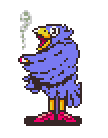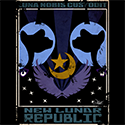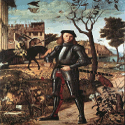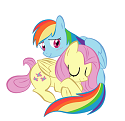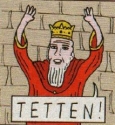|
Rodrigo Diaz posted:Yo before you folk keep spouting completely uninformed theories on mail's origin and implementation please read this first: http://www.myarmoury.com/feature_mail.html OK so as promised here are my thoughts on Mr. Howard's points. One serious criticism is that he does not provide very good evidence for the use of mail in the later Middle Ages. That prices existed for it is fine, but does not speak to its popularity or lack thereof. Some of the strongest evidence for the continued usefulness of mail comes from the Western Highlands & Isles of Scotland. As elaborated on by Dr. Martin MacGregor in the recently-published Military History of Scotland this region is unusual in Europe as a majority of its noblemen wore mail instead of plate as body defence well into the 16th century, after which point the military independence of the Western Highlands wanes rapidly, and so too do many aspects of its martial culture. For a somewhat earlier example, we can look to Pero Niņo's biography. To contextualise, Pero Niņo was raised in the household of the King of Castile, and thus was a noble of high enough standing to warrant the friendship of the king himself, though his territorial holdings never amounted to much as far as I can tell. This passage describes his deeds during the Siege of Pontevedra in 1396. I should also point out that the translation here is, I think, incorrect. I have not had a look at the original text to confirm, but the author describes Don Pero as wearing a 'gorget' in the translation, when in fact he was more probably wearing a mail aventail. Gutierre Diaz de Gamez posted:His arms were a coat [of mail], a bassinet with gorget, according to the fashion of the time, and a great tilting buckler. . . There are two important things to note from this passage, which deal directly with Mr. Howard's points on mail. One is that it reemphasises his contention that it was an effective form of defence. Lances, bows, crossbows and swords were unable to penetrate Don Pero's armour enough to seriously debilitate him. The most serious wound he received was dealt to his uncovered face. His neck, too, received a wound through the 'gorget', but it seems that its more serious consequence was the binding in his armour it caused than damage to flesh. This passage also brings up a point that Mr. Howard does not. While, yes, plate armour can be bent and pierced in various places, it does not compromise the armour in the same way that damage to mail does. Being made of individually weaker pieces, especially on the torso, means that the mail can have holes torn in it over the course of the battle. Thus I would say that while mail, when whole, is very effective it has a greater tendency to deteriorate in protective quality over the course of an engagement. While mail is easier to repair, in other words, it is easier to break, too. This is, again, not to say that it is in any way a bad form of defence. It is clear that plenty of men-at-arms were very much satisfied with mail armour, and indeed could prefer it to cheaper alternatives. Looking earlier, there are very interesting examples of mail's protective quality from William the Breton's prose account of the Battle of Bouvines: William the Breton posted:Gerard La Truie, who was nearby, struck [Emperor Otto IV] in the middle of the chest with a knife which he held unsheathed in his hand, and when he saw that he could not pierce through (because of the thickness of the armor with which warriors of our time are equipped and which is impenetrable), he gave him a second blow to make up for the failure of the first. He thought that he was going to hit Otto's body but instead he met the horse's head which was high and raised; he dealt it a blow right in the eye and the knife, thrust with great virtue, slipped all the way to its brain. Halloween Jack posted:So from the 1200s to 1400, they were supplementing mail with breastplates, vambraces, and greaves until the first full suits of plate showed up around 1400? One thing that tends to get lost in these analyses of armour development is that plate armour never actually disappeared. Helmets remained a plate armour component through the migration period and into the Middle Ages. Additionally, lamellar and scale were both in use around the time of Charlemagne in Western Europe, and throughout the Middle Ages in and around Rus'. The technology to make armour like the lorica segmentata was clearly not lost, but rather seems to have been rejected in favor of mail. Obdicut posted:Pikes first started getting used in the 1300s (apart from antiquity). Plate armor reached its zenith in the 1600s. On pikes you are mistaken. Pikes, as far as I can tell, never truly fell out of use. They certainly were in use by at least some peoples throughout the Middle Ages. The Menavlion described in the Praecepta Militaria was a thick spear in excess of 3m in length, which arguably qualifies it as a pike. More directly, Wace in his Roman de Rou provides this example: Wace posted:There was a mercenary there from France who conducted himself very nobly and sat on a wonderful horse. He saw two very arrogant Englishmen, who had stayed close to each other because they were highly thought of. . . They held two long, broad pikes at shoulder height and were doing great harm to the Normans, killing men and horses. The mercenary looked at them, saw the pikes and feared them... But soon he had quite different thoughts. He spurred his horse, pricking it and dropping the reins, and the horse carried him swiftly. He raised his shield by the straps, for fear of the two pikes, and struck one of the Englishmen cleanly with the lance he was holding, beneath the chin, on the chest; the iron passed right through his spine. While this one was being struck down, the lance fell and shattered, and he seized the bludgeon which hung from his his right arm and struck the other Englishman an upwards blow, shattering and breaking his head. Though the translation may be faulty, and the weapons held by the Anglo-Saxons may be hewing spears, the translation elsewhere differentiates between spears and pikes, so at the very least the original language accounted for two different types of polearm. Also of interest is this image from the Morgan Bible. Although pictorial evidence cannot often be relied on (I doubt, for example, that medieval foot soldiers were typically pygmies) the use of a two-handed spear is noteworthy, and the Morgan Bible is generally quite reliable on the appearance of equipment, even if its depictions of effect are typically dubious. 
|
|
|
|

|
| # ? May 9, 2024 09:33 |
|
canuckanese posted:It's funny you bring up Normandy, because the Normans built tons of stone castles as a way to control the countryside and as regional strong points, especially in England since they were the minority ruling over the Anglo-Saxons. I was under the impression that a lot of the changes to castles that resulted from the Crusades were related more to design and how they were built, rather than where they were placed and what their function was. There were, however pre crusade stone was much rarer. Most fortifications were wood motte and bailey types. Or at least as far as I understand. There were stone fortifications, they were just less common. The reason I bring up Chateau Gaillard is, as soon is Richard gets sprung from jail and gets back following the third crusade he builds this monster in just under 2 years. Very very quick back then. Spends nearly double what Dover's budget was and implements a 3 tier system with a keep at the top. Should have been impregnable so long as a QRF force relieved them within 8-10 months. This however didn't happen as John was rather inept and it fell to the French early in it's life. 1196-1204. So yes, the Castle design was revolutionary in Western Europe. It dominated the Seine and had a dock that stretched a good way into the river which could control traffic. While using a fortification system atop the hill that was based on redundancy. Eastern influence is all over it. As far as use and placement, I'm quite fuzzy on Castles roles within the Norman conquest of Britain and there use to hold the country. I will look into it. Gaillard is a great example of what followed a century later though in Wales. How fortifications built on regional or local defensible positions maintained order in the period.
|
|
|
|
Rodrigo Diaz posted:
It's been my impression that spears shortened considerably and then lengthened again, but I certainly overstated it by saying that they started getting used again. There definitely always were some people using them, but my main point was that plate armor didn't reach its zenith until hundreds of years after the pike had been in very common use and so plate didn't fall out of favor due to pikes.
|
|
|
|
EvanSchenck posted:As an aside as I'm writing this I realized that the history of the papacy could be interpreted as an empire-building narrative, with te empire being the powerful religious/financial/political structure that developed under the Pope between the 8th and 14th centuries, which makes me curious if any medievalist has written it that way. 1. The etablishment of the pope as the unquestioned head of the church. 2. A cohesive and semi-united ecclesiastical organisation and administration that encompasses all of Europe. 3. The ideological platform of gregorianism and libertas ecclesiae. The commonly cited papal church as a state points: 1) Its own bureaucracy. 2) An independent head of state. 3) A capital with consistent and adjacent territory. 2) A judicial system, complete with its own laws and courts. 3) A system of taxation. 4) An independent foreign policy, both to christian and non-christian states and with the ability to project power (crusades are used as the example here). 5) A distinct community-forming cultural identity. 6) Several typical state-level social tasks such as education, poverty relief and medical treatment.
|
|
|
|
What did the Vikings do when they weren't out pillaging? Were they normal farmers who just happened to be the scariest raiding force in Medieval Europe? Same question, but with knights. Did the knights just kinda chill at their barracks like modern soldiers do when there's no war?
|
|
|
|
Smoking Crow posted:Same question, but with knights. Did the knights just kinda chill at their barracks like modern soldiers do when there's no war? Being a knight isn't a job in the modern sense, it's one part of these peoples' entire lives as nobles--so when they didn't go to war, they'd go home to their estates or go to court to serve the king, or whatever it is they did. The difference between a modern job and a medieval Stand is that the first is what you do for a living but the second is your life, your state of being, and your identity.
|
|
|
|
Smoking Crow posted:What did the Vikings do when they weren't out pillaging? Were they normal farmers who just happened to be the scariest raiding force in Medieval Europe? Pretty much exactly this. They would be farmers, fishermen, artisans, whatever. Raiding was a way to give a bunch of young men something to do when there wasn't much going on. Smoking Crow posted:Same question, but with knights. Did the knights just kinda chill at their barracks like modern soldiers do when there's no war? Depends. Most knights would generally spend time training. A landed knight would hang out at his holding and govern the surrounding area. Unlanded knights would serve as a retainer for a noble, or just wander around, whatever it is he did. Knighthood was a title, and while they were professional soldiers in a sense, that wasn't the only thing that occupied their lives.
|
|
|
|
Did Viking raids die down or intensify as the Little Ice Age began? Were they driven by desperation or just good ol' greed?
|
|
|
|
Smoking Crow posted:What did the Vikings do when they weren't out pillaging? Were they normal farmers who just happened to be the scariest raiding force in Medieval Europe? I'm no expert, but I think most vikings were farmers or artisans during the "off-season". Vikings only raided a certain time of the year, and the rest of the year they were preoccupied with whatever occupation they had. Knights were lesser nobility, and either lived in the households of their feudal lords or held land themselves. There was a difference between "household" knights, who lived in the houses of their lords and probably slept in the barracks, and "landed" knights, who were given land by their lords and lived on it. The knight was expected to use the land to support himself, such as supplying him with horses and weapons and armour, to take the load off of his liege lord. But he still swore oaths of fealty towards his lord, since his lord was the one who granted him the land and he's just using it. This could all be wrong, though.
|
|
|
|
Grand Prize Winner posted:Did Viking raids die down or intensify as the Little Ice Age began? Were they driven by desperation or just good ol' greed? The high point of Viking raiding was from 850-1050ish, so they large-scale raiding was done about two centuries before the Little Ice Age, although some did continue up until then. By the time of the Little Ice Age, Vikings or their descendants had already conquered Normandy, England, Sicily, and established Novgorod and Kiev (although these ended up becoming highly Slavicized). We're not really sure what the original causes for mass raiding was. Material goods played a factor, but the population was also growing at the time, so the need to colonize new lands was there too. Lots of Scandinavians were already traders, and some historians have theorized that Christians snubbing them for being pagans, or just a general break down of trade between Scandinavians and others led to raiding as an alternative.
|
|
|
|
Thats a pretty nifty way of working things out though. Solve 2 problems in one. Knights are loving expensive to equip. Armour, arms, several loving horses, squires the works. Also you gotta feed the fuckers and house them. Additionally having a group of bored killing machines kicking around your house is just asking for trouble. I imagine it was a real pain in the arse trying to administer any sizable amount of land. Sure you're lord of bumblefuck and all those peasants owe you taxes, but gently caress if they don't all look the same. Did we go try and collect from bumbletown or bumblevillage yesterday? Why not split it up between those knights of yours, let them collect the taxes, give you your cut and buy their own drat horses out of their own cut. With the added bonus of these killing machines are now incredibly loyal to you since with you they have everything, without you they have jack poo poo.
|
|
|
|
Cast_No_Shadow posted:With the added bonus of these killing machines are now incredibly loyal to you since with you they have everything, without you they have jack poo poo. Until they (or their descendants, usually their descendants) realize that now that you've given them the village they don't need anything else from you.
|
|
|
|
The current vision of Medieval people is that all they did was work and pray. What did they do for fun back then? What forms of entertainment were there?
|
|
|
|
Smoking Crow posted:The current vision of Medieval people is that all they did was work and pray. What did they do for fun back then? What forms of entertainment were there? Not much, Life expectancy was short. The masses were mostly serfs. You would have fairs, religion, and general shananigans to keep you preoccupied. That and making babies and drinking.
|
|
|
|
Smoking Crow posted:What forms of entertainment were there? Work and pray? Also sex. Which reminds me, I was reading some BBC story about sleep or something and back before the industrial revolution we would apparently go to bed when it got dark, sleep for ~4 hours. Wake up for an hour or two, do poo poo, go back to bed for ~4 more hours. Most people just had sex, had a snack, said some prayers, went back to bed.
|
|
|
|
Cast_No_Shadow posted:Thats a pretty nifty way of working things out though. Solve 2 problems in one. bres0048 posted:Not much, Life expectancy was short. The masses were mostly serfs. You would have fairs, religion, and general shananigans to keep you preoccupied. That and making babies and drinking. Halloween Jack fucked around with this message at 01:52 on Jun 28, 2013 |
|
|
|
bres0048 posted:Not much... https://en.wikipedia.org/wiki/Carnival#History Artists like the Bruegels are good for that sort of thing: https://en.wikipedia.org/wiki/The_Peasant_Wedding HEY GUNS fucked around with this message at 02:35 on Jun 28, 2013 |
|
|
|
Halloween Jack posted:I thought that it was originally the other way around--you have petty lords until a king unites them--and that the idea of the king as the only one with true allodial property rights over his entire nation developed over the course of the first millennium AD. (Of course, after that you have people who become knights or household knights who are promoted and then need to be given land.) I was just guessing  Perhaps should have made that clearer. It certainly makes a lot more sense that it was a system evolved from the bottom up. Perhaps should have made that clearer. It certainly makes a lot more sense that it was a system evolved from the bottom up.
|
|
|
|
Grand Prize Winner posted:Until they (or their descendants, usually their descendants) realize that now that you've given them the village they don't need anything else from you. But the knight doesn't own anything, by the time this system develops it's all legally the king's land. The knight is a tenant on the land who must meet certain obligations to his lord, usually military service or payment. If he doesn't, he'll get evicted.
|
|
|
|
It's good to know that even then, tenants were getting hosed over by their landlords.
|
|
|
|
I'm still working my way through the thread, so apologies if this has been asked before. Did skirmishers play much role in medieval warfare? Was there any equivalent of Roman velites? I'm guessing the shift away from heavy infantry to heavy cavalry meant there wasn't much opportunity to harass the other side's line with javelins and stones and/or risked your skirmishers getting smashed to pieces by the cavalry...
|
|
|
|
What's the craziest mythical beast included in one of those bestiaries?
|
|
|
|
Hydrolith posted:I'm still working my way through the thread, so apologies if this has been asked before. Pretty sure the Velites were phased out in favor of Archers, both foot and mounted. The range was so much better than what the Velites could offer. You also had the addition of anti infantry siege machinery that advanced through the ages. Grape shot, nasty stuff.
|
|
|
|
Cast_No_Shadow posted:I was just guessing
|
|
|
|
Just to be clear we're not talking about the whole Divine Right of Kings, right? Because that's a deal later. I think. Ah gently caress it, too long since I've studied. Are there any verifiable sources for the Arthurian legends? I don't mean a factual Arthur. But the myths Malory put together in Le Morte D'Arthur had some basis in regional folktales, right? Like... Saxon stories, Welsh stories, and French stories all kind of combined, right? Has anyone managed to track these earlier myths or are they lost because they weren't written?
|
|
|
|
bres0048 posted:Pretty sure the Velites were phased out in favor of Archers, both foot and mounted. The range was so much better than what the Velites could offer. You also had the addition of anti infantry siege machinery that advanced through the ages. Grape shot, nasty stuff. Sorry, I meant more the tactics of skirmishers, rather than the specific equipment of velites. As in: harassing the main body of the enemy infantry with ranged weapons (running away when they try to chase you rather than giving battle), and screening your own main infantry from enemy skirmishers. My understanding was part of why skirmishers can hit-and-run is because they aren't heavily armoured and so faster. But then, this thread did establish that armour isn't an impediment to speed or maneuverability, but rather to stamina, so... maybe I should take the Total War games with a grain of salt.
|
|
|
|
Cast_No_Shadow posted:Thats a pretty nifty way of working things out though. Solve 2 problems in one. Medieval England around the 14th and 15th centuries tended towards centralization of the army and civilian administration. Towards the late middle ages I think they would have many unlanded knights and non-noble professional soldiers, all paid for by the King through centralized taxation. England was also known for drawing better-equipped levies from landed farmers and the middle classes, as all petty landowners had duties in the army. Feudalism was not universal in all countries. England tended towards a centralized system because its rulers spent hundreds of years trying to bring the saxon inhabitants (of all classes) under control. Countries like France were feudal for a very long time because the nobility was disunited.
|
|
|
|
Hydrolith posted:Sorry, I meant more the tactics of skirmishers, rather than the specific equipment of velites. As in: harassing the main body of the enemy infantry with ranged weapons (running away when they try to chase you rather than giving battle), and screening your own main infantry from enemy skirmishers. My understanding was part of why skirmishers can hit-and-run is because they aren't heavily armoured and so faster. But then, this thread did establish that armour isn't an impediment to speed or maneuverability, but rather to stamina, so... maybe I should take the Total War games with a grain of salt. Pretty sure Archery still trumped there though. They can do more damage from a greater distance without much difference in mobility with skirmishers. Unless you're mounted or something, you can't easily do hit-and-run, people just don't have that huge a gap in foot mobility without huge gap in equipment.
|
|
|
|
here is a huge post about Byzantine swords, should be of some interest to people here.
|
|
|
|
Smoking Crow posted:The current vision of Medieval people is that all they did was work and pray. What did they do for fun back then? What forms of entertainment were there? E: Nearly forgot, dice were definitely around in medieval times as well and you can use those for a lot of different games as well. Smart Car fucked around with this message at 13:49 on Jun 28, 2013 |
|
|
|
Smart Car posted:Board games have been played for a long time, it's relatively easy to make your own board for checkers or morris, and for the pieces you just need two different objects for either game so you could easily use stones for one side and bits of wood for the other or whatever. Additionally after the invention of the printing press, playing cards also started to appear, tarot cards aren't usually used for that purpose any more but they were used for card games in that time period, and you can play a lot of different card games with a deck of cards. To be honest, the more I hear about what people did the more I realise we really don't change. Just look at what people do now, take away modern technology, and welp looks like they did it then as well.
|
|
|
|
I'm no expert, but I bet the only real difference in terms of amusements to modern times would be the relative popularity of bloodsports, and even then only when we're talking about as compared to middle-class Americans.
|
|
|
|
Cream_Filling posted:I'm no expert, but I bet the only real difference in terms of amusements to modern times would be the relative popularity of bloodsports, and even then only when we're talking about as compared to middle-class Americans. Well, there's also a much higher level of literacy now.
|
|
|
|
Also, since we're talking about idle amusements for common people, I've gotten addicted to the game Crusader Kings II, and if any of the history people here know about it and had comments on its historical accuracy, etc. (either here or in the Games thread if it's too off-topic) that would be pretty rad.
|
|
|
|
Cream_Filling posted:I'm no expert, but I bet the only real difference in terms of amusements to modern times would be the relative popularity of bloodsports, and even then only when we're talking about as compared to middle-class Americans. We got virtual bloodsports now. We good.
|
|
|
|
veekie posted:We got virtual bloodsports now. We good. Also dog and cock fights, even if they tend to be forbidden everywhere today. Bullfights are still popular in Spain, and that goes way, waaaaaaay back. Did ancient peoples have equivalents to our modern hunting culture of city folks going to a country cottage to drink beer and shoot critters for fun, trophies and food, in that order of importance?
|
|
|
|
Nenonen posted:Also dog and cock fights, even if they tend to be forbidden everywhere today. Bullfights are still popular in Spain, and that goes way, waaaaaaay back. Isn't that what landed nobles basically did between wars? Hunt game animals with their court and then eat them? I thought part of the appeal of modern hunting, much like owning arms, is that it's a historical privilege of the nobility that's now been allowed to the common people.
|
|
|
|
Hunting was a big pastime for the nobility, but for many centuries you couldn't say that having the meat itself was the least important part of it. People would not have been willing to risk the extreme penalties for poaching on nobles' land if the meat weren't very valuable, and the disparity between rich and poor in terms of total assets was not what it is today. Compare the embroidery done by noblewomen and their ladies-in-waiting. It had actual economic value; it was a long time before medieval economies could afford to have lots of people who didn't do any work at all.
|
|
|
|
Halloween Jack posted:Compare the embroidery done by noblewomen and their ladies-in-waiting. It had actual economic value; it was a long time before medieval economies could afford to have lots of people who didn't do any work at all. I'd imagine the only times any economy might go without the labor of any significant part of the population would be when some new development wiped out the demand for workforce and the dust hadn't settled yet. Otherwise you'd be consuming/desiring more goods than people would be producing and rapidly lose out in competitiveness. Of course, any administrators/rulers can usually make enough stick to their palms to excuse their immediate family, but they aren't exactly numerous.
|
|
|
|

|
| # ? May 9, 2024 09:33 |
|
Hydrolith posted:Sorry, I meant more the tactics of skirmishers, rather than the specific equipment of velites. As in: harassing the main body of the enemy infantry with ranged weapons (running away when they try to chase you rather than giving battle), and screening your own main infantry from enemy skirmishers. My understanding was part of why skirmishers can hit-and-run is because they aren't heavily armoured and so faster. But then, this thread did establish that armour isn't an impediment to speed or maneuverability, but rather to stamina, so... maybe I should take the Total War games with a grain of salt. The only thing you should take seriously from the Total War games (if even that) is the historical background descriptions of units, buildings and factions. The gameplay itself, both strategic and tactical, has very little in common with how things actually worked historically.
|
|
|







